How to Fix & Firm Up Muddy Yards for Residential and Commercial Grounds
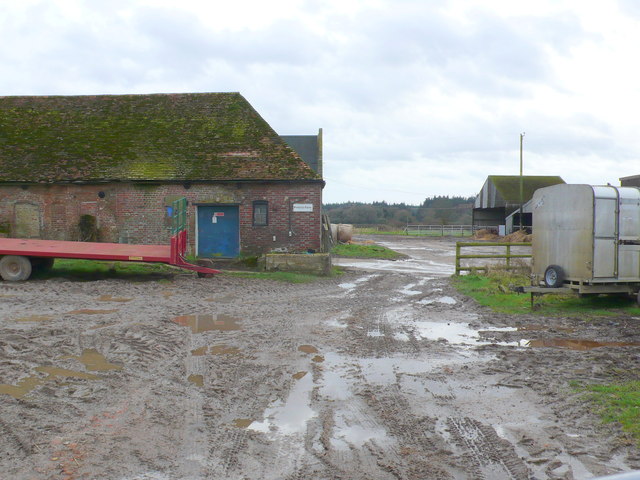
If you’ve ever had to deal with mud on your property, it’s no surprise that you’d want to know how to fix a muddy yard. Muddy yards look disheveled and unkempt, and they can turn into bigger problems than a simple eyesore.
Having a yard and/or driveway that’s become muddy can lead to mud being tracked into your building. It can also lead to ruts, erosion, insect problems, indoor stains, dirty vehicles, muddy pets, and more.
Unfortunately, for those with muddy yards, there can seem to be no real solution. Sometimes the soil in your yard just isn’t great at holding water, or maybe your land is at an angle where stormwater pools into it, causing mud and flooding.
Whatever the cause may be, there is a solution that can act as a permanent muddy yard fix. If you’re wondering how to fix a muddy yard, let’s take a look at the best solution.
The First Step to Fixing a Muddy Yard
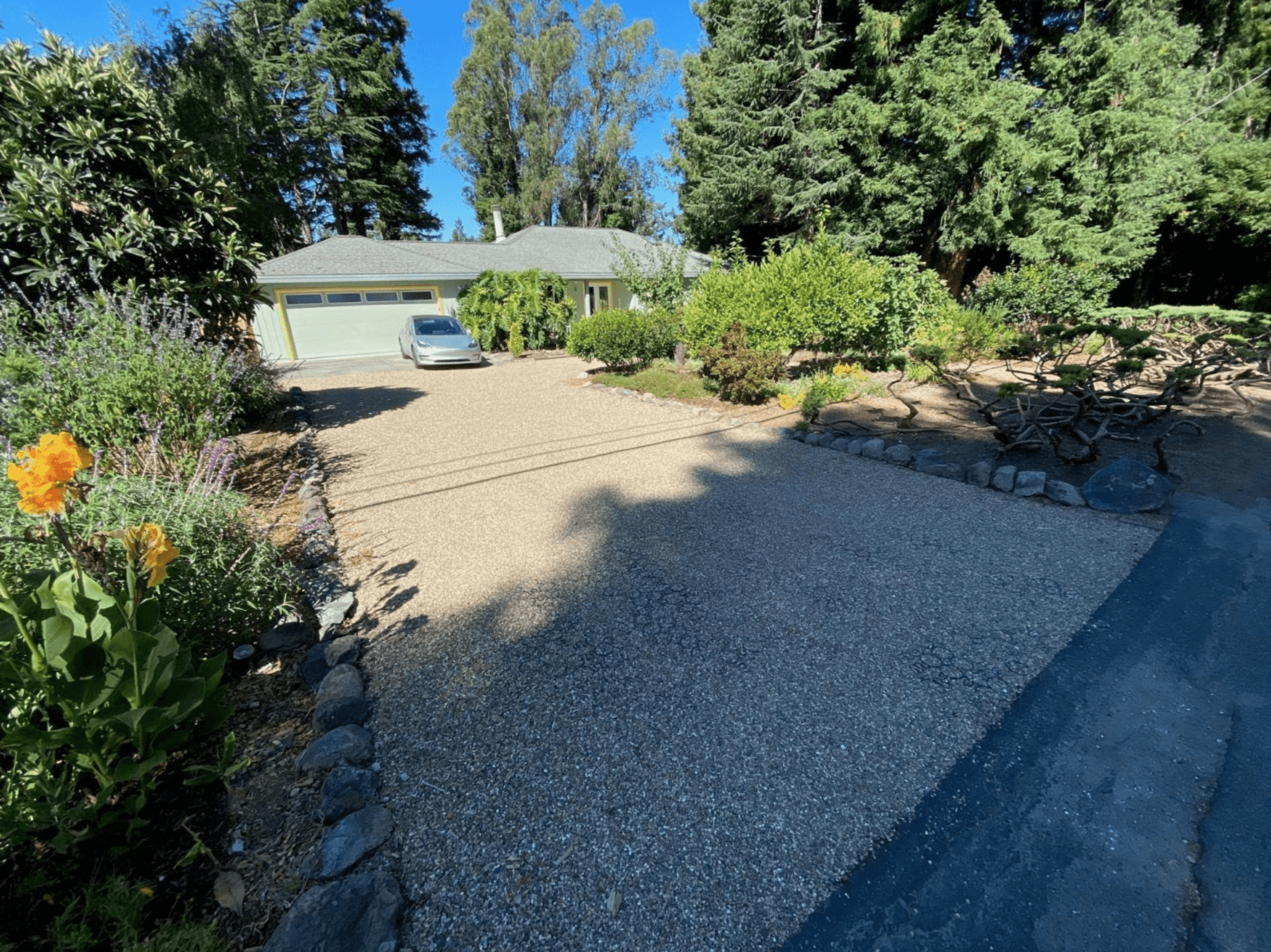
Our yards get muddy when they become oversaturated with water. This usually happens due to stormwater, and improper drainage only exacerbates the problem. The average yard is able to avoid flooding by draining water through its soil and into the water table below.
If too much water gets into a yard too quickly, this can leave the soil saturated. Once the soil is saturated, you need a solution. The worst part is that when a yard gets truly muddy, it can take days or even weeks to fully dry out again, and that’s if you don’t get any more rain in the meantime.
If you want to firm up muddy ground, the first step is to implement an effective drainage solution. The only effective drainage solution for an entire yard that will prevent mud is permeable pavers.
Permeable Pavers Can Defeat Mud for Good
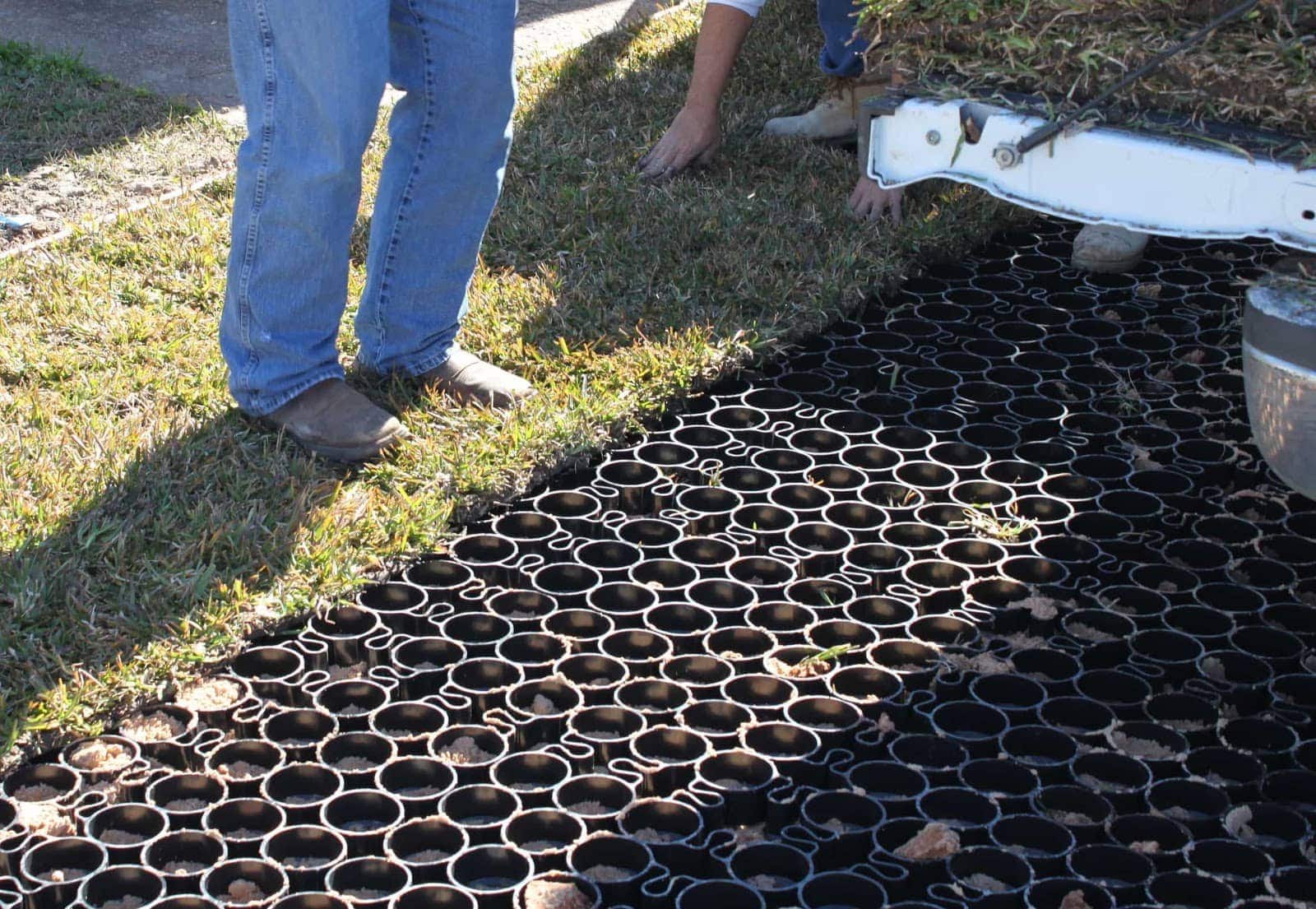
If you’re looking for muddy ground solutions, TRUEGRID PRO LITE and TRUEGRID ROOT are the best on the market. TRUEGRID permeable paving systems use durable, eco-friendly pavers made from 100%-recycled plastic. The permeable pavers are used to create a stable base that you can walk or drive on without getting muddy or tearing the yard up.
With TRUEGRID PRO LITE, you can implement a drainage solution that prevents your yard from ever getting muddy again. The installation is very quick, and there’s almost no maintenance required once your pavers have been installed. To prevent a yard from ever getting muddy again, the solution is to install TRUEGRID permeable pavers filled with gravel or grass.
First, the entire yard area will be excavated slightly. If the soils are clay and don’t drain well a drainage base of rock may be used. The depth will depend on the water storage needed but may vary from zero inches of rock for compact soils that drain well to 8 inches if storage is needed. A cloth will be laid at the bottom of the gravel will be filled to the top of the empty pit and compacted. Once the gravel fill is compacted and level, more empty pavers will be snapped into place over the top.
The next step is for gravel to be poured over them and crushed into them with a heavy vehicle or roller. This completes the installation of TRUEGRID PRO LITE pavers and leaves you with a surface capable of draining a lot of water directly through it, and into the soil below.
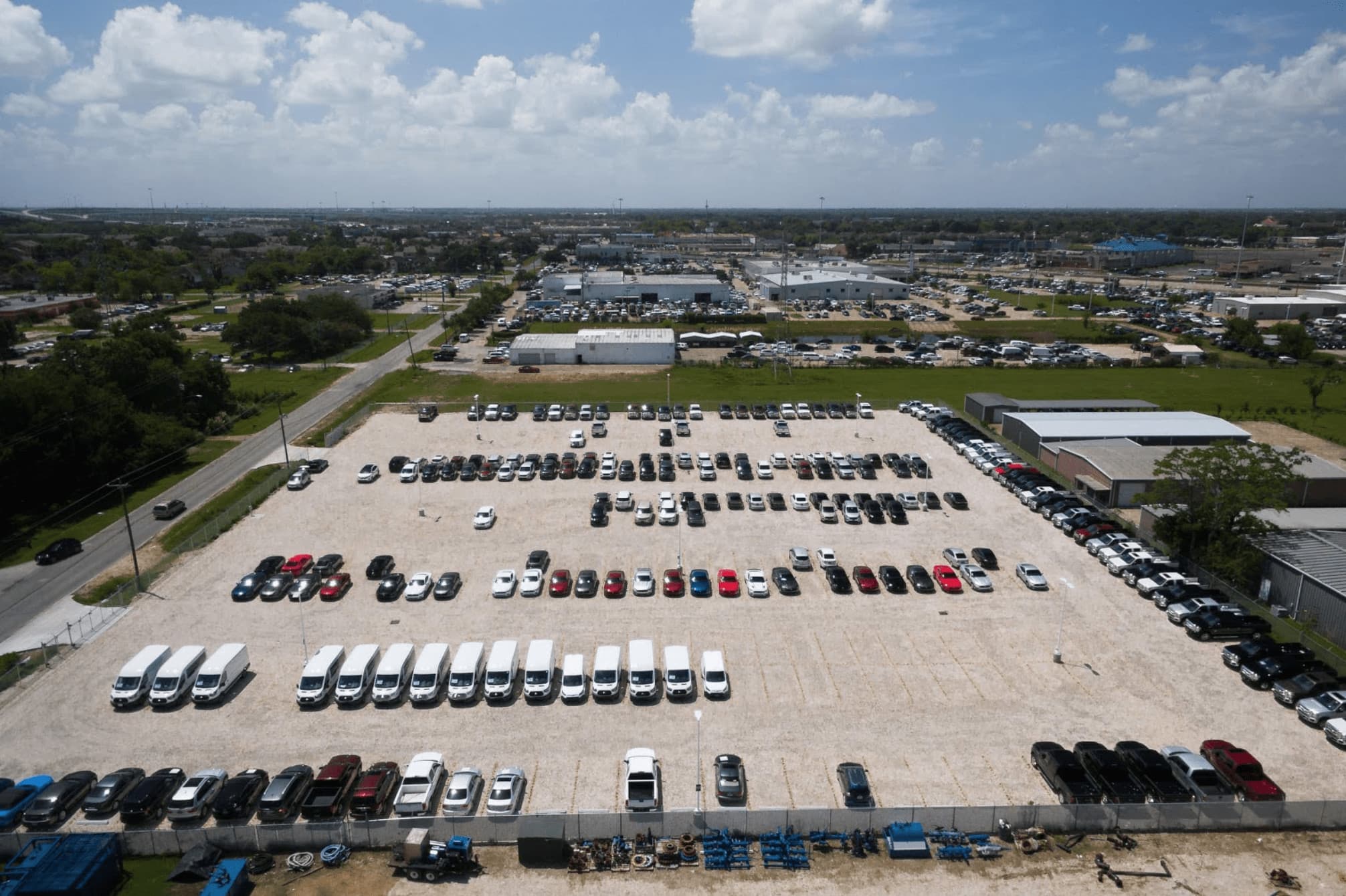
TRUEGRID ROOT pavers are an effective muddy grass solution. If you still want a grassy yard, you can also use TRUEGRID ROOT pavers on the layer of grass for instant stabilization of your grass area.
TRUEGRID ROOT pavers are designed to be pressed into place onto the grass. They lock into the very top layer of soil and provide empty, rigid cells for the grass to protrude through. The rigid plastic structure of the pavers keeps soil from moving around too much when it’s wet and prevents mud from getting out of hand.
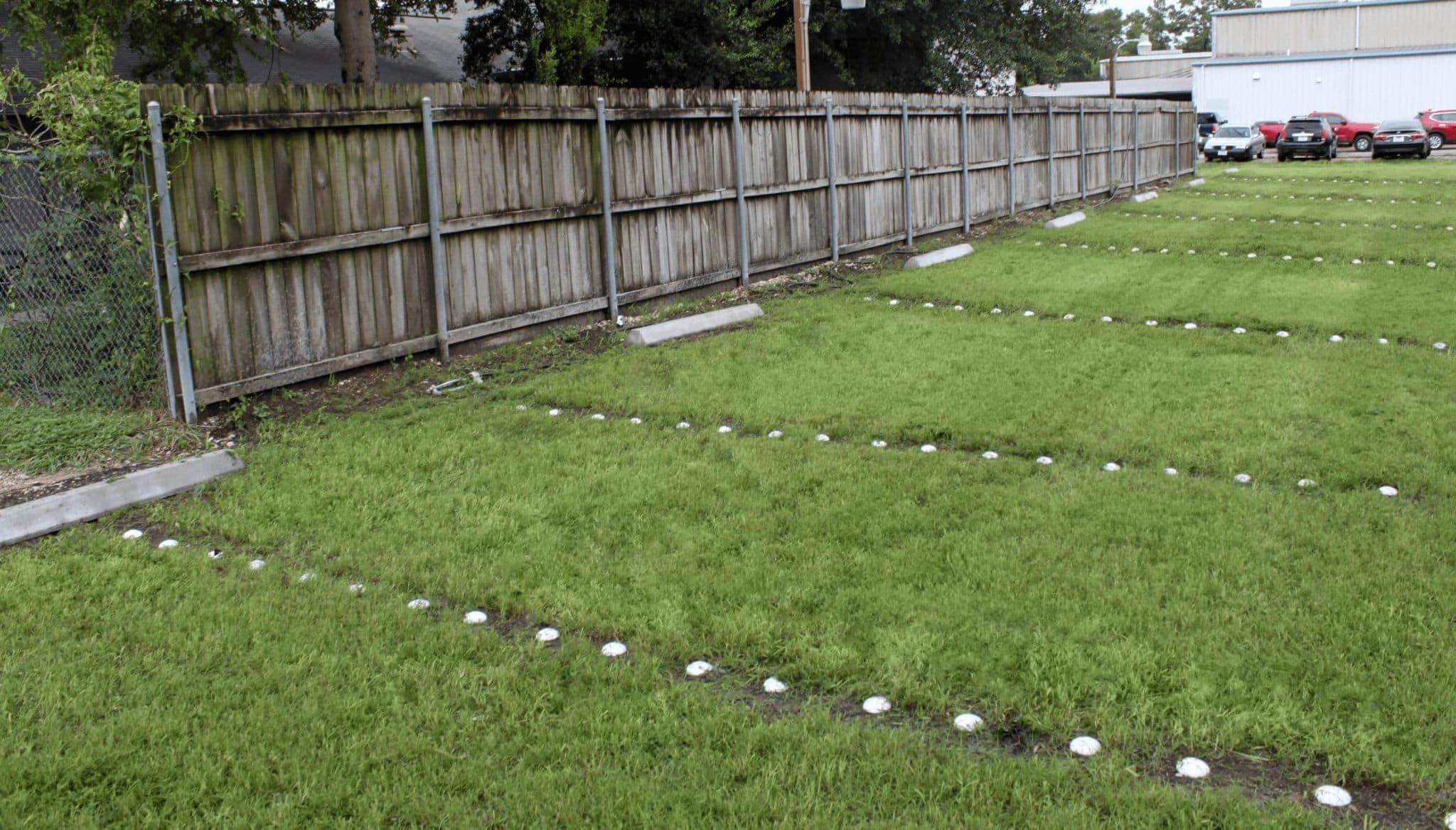
For soil that’s a bit muddy and expected to handle foot and/or vehicle traffic, TRUEGRID ROOT pavers can be used on their own. As long as you aren’t getting washed out with stormwater, TRUEGRID ROOT pavers are perfect, especially for the residential or commercial property owner wondering how to fix a muddy yard for dogs.
The pavers will allow your grass to grow through them and will be nearly invisible once the grass gets to a certain height. They act as soil stabilizers as well, preventing bare spots and mud from being created by foot or vehicle traffic.
TRUEGRID Pavers Can Fix Your Muddy Yard for Good
You shouldn’t have to sacrifice a green lawn to have a yard without mud problems. If your yard needs better drainage, more stabilization, or both, don’t let the problem get any worse before you address it. Call TRUEGRID right now to get in touch with a permeable pavement specialist who can help you firm up your muddy yard for good!
Stormwater drainage is a big deal for many homeowners and business owners everywhere. Stormwater needs to have one or more outlets for drainage when storms occur or else the water will pool, flood, and cause a variety of issues that nobody wants to deal with.
Stormwater Drainage Systems
Thankfully, there are a wide variety of ways to deal with stormwater, with some being more effective than others. In case you’re about to implement a stormwater solution on your property or you’re looking for a better alternative to what you currently have, here are 5 types of stormwater drainage systems:
1. Slot Drains
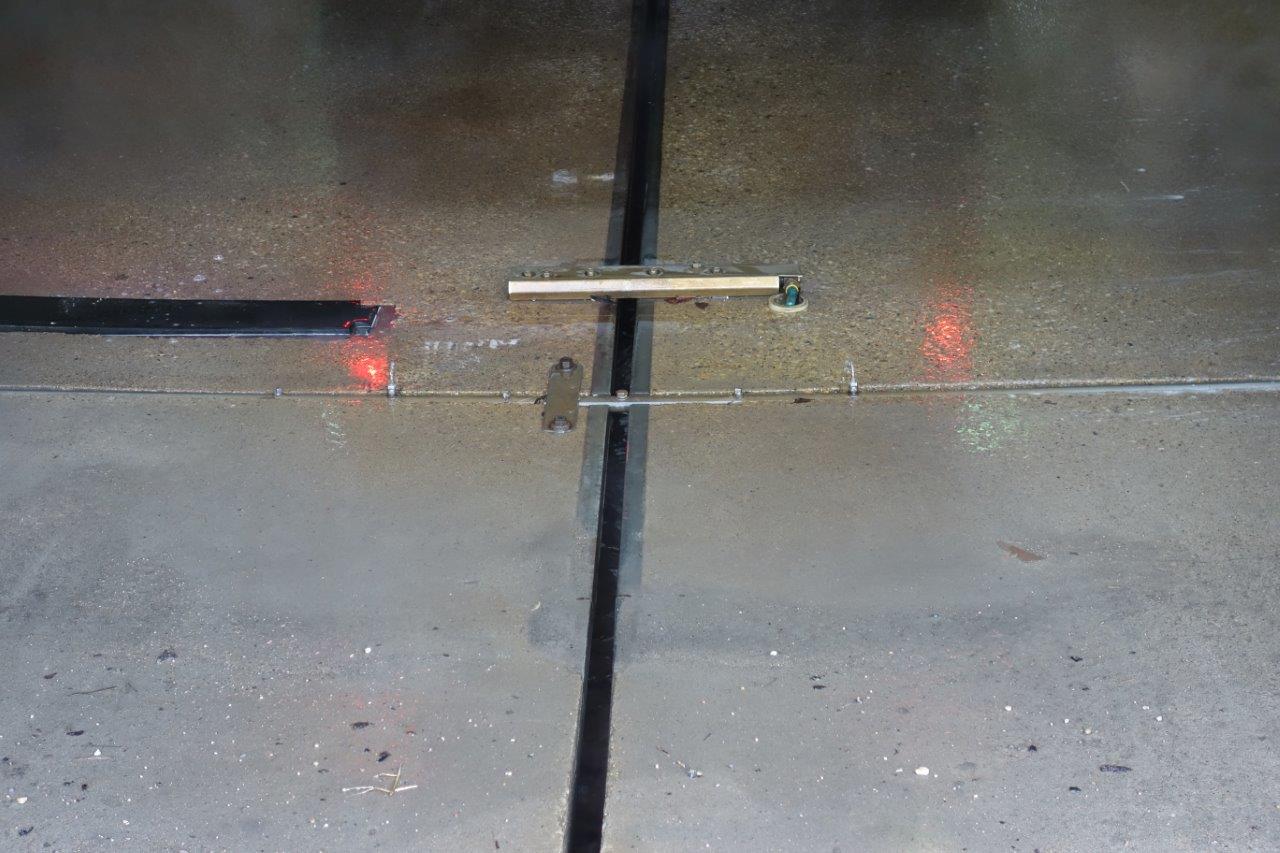
Slot drains are a recent innovation in drainage technology. They utilize long, thin drain slots that often run the entire length of a room or area. They are great for outdoor areas that don’t require excessive drainage, however they tend to flood easily when exposed to heavy rainfall.
This issue makes slot drains one of the least effective stormwater drainage systems. Even with multiple slot drains installed, outdoor areas are very hard to manage with this type of drain, because water quickly overflows them.
They can work effectively in light rainstorms and situations where the rate of precipitation isn’t very high. They can also be driven and walked on without issue, and are rather easy to clean when compared to other types of drains.
2. Open Storm Drains
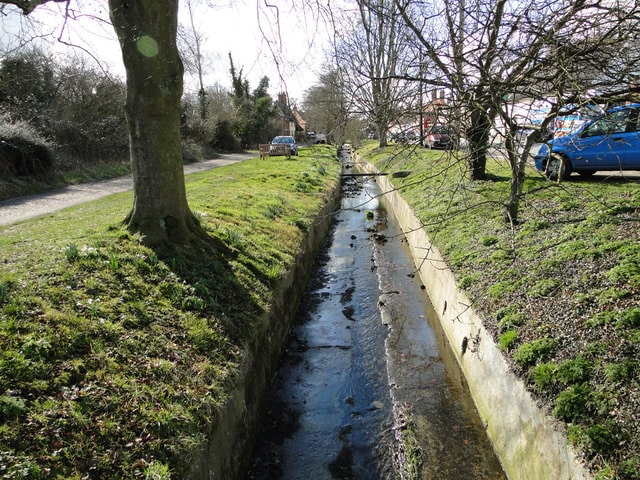
Open storm drains are drains that usually run parallel to a nearby road or parallel to the edge of a property. They feature long, uncovered channels to carry free-flowing stormwater. These channels often direct water into a local sewer system where it can be treated and managed. Open storm drains can be expensive to set up but are usually cheap to maintain once they’ve been installed.
They are a great stormwater drainage setup for those who aren’t too incredibly concerned about looks, and want to collect surface water with ease. Lots and paved areas can be sloped towards open storm drains. They are unsafe, though, and require fencing to keep animals and people from falling in. They can also smell and may even decrease your property value.
3. Closed Storm Drain
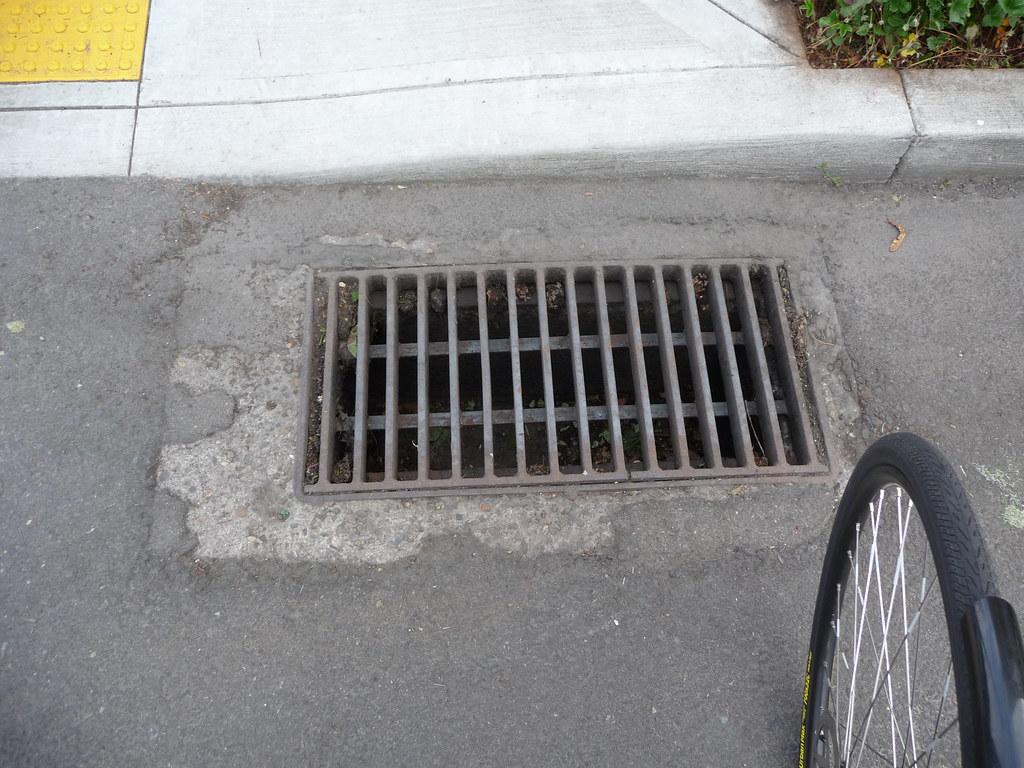
Most of the stormwater management systems you see now are stormwater grates that lead to a local, underground sewer system. Closed storm drain grates can be found in the low areas of parking lots, the trenches near sidewalks, and other areas where water intentionally or unintentionally tends to collect. Though safer and less unsightly than open storm drains, they are difficult to clean and labor-intensive to install.
4. French Drain
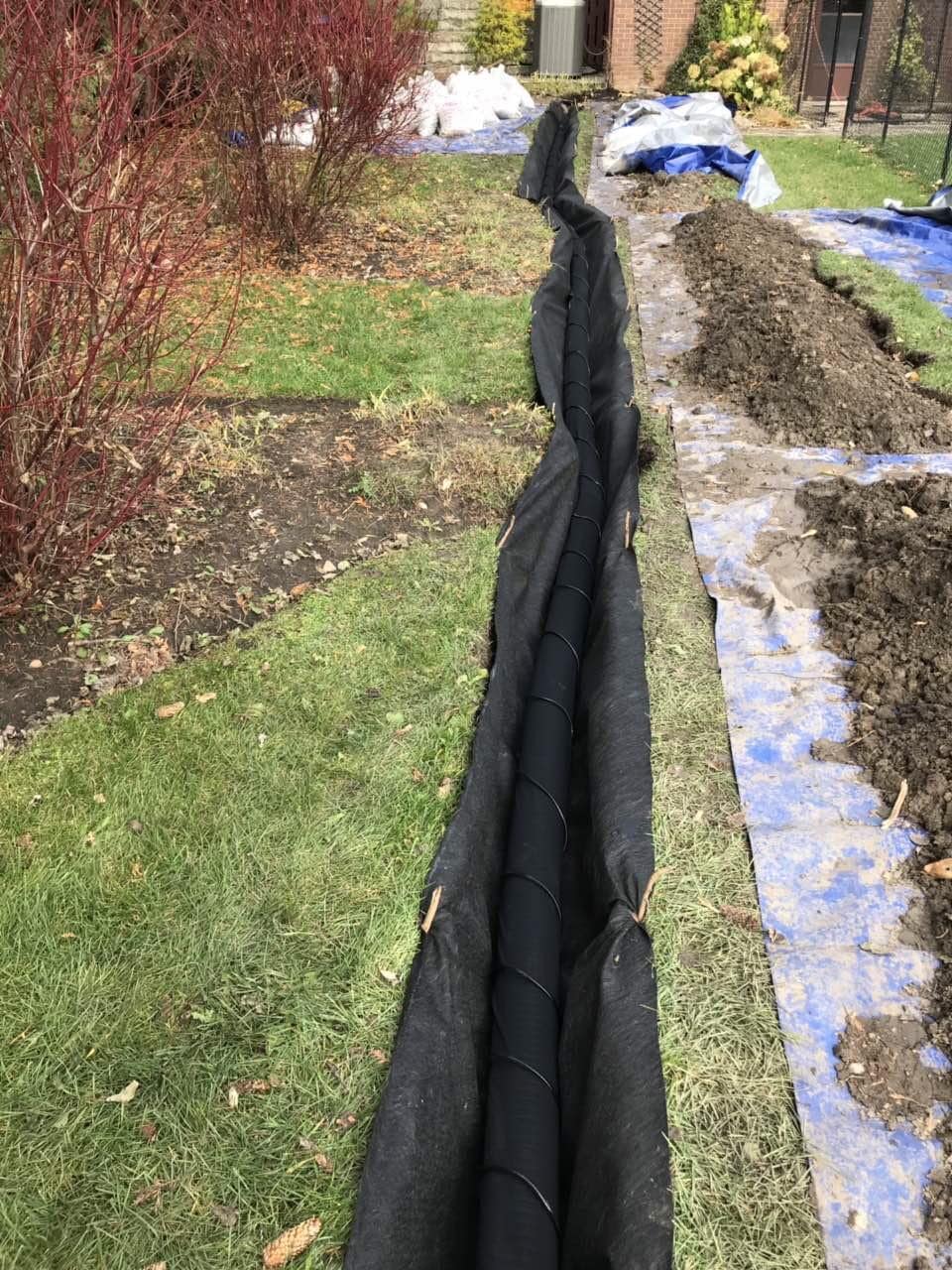
If you want to prevent water from pooling around the foundation of your home or building, french drains are the way to accomplish it. These types of stormwater drains typically utilize small grates located near the foundation of a building. The grates funnel the water into long pipes that carry it away from the edge of the building and into the street, or even into a water retention basin.
The best part about French drains is that the long pipes they use are almost always covered up with aesthetically pleasing pebbles or grass. They also make use of intricate, beautiful grates as well. French drains are great for draining water that pools near the foundation of a building, but are not as effective when it comes to draining surface water over a broader area.
5. Permeable Pavement
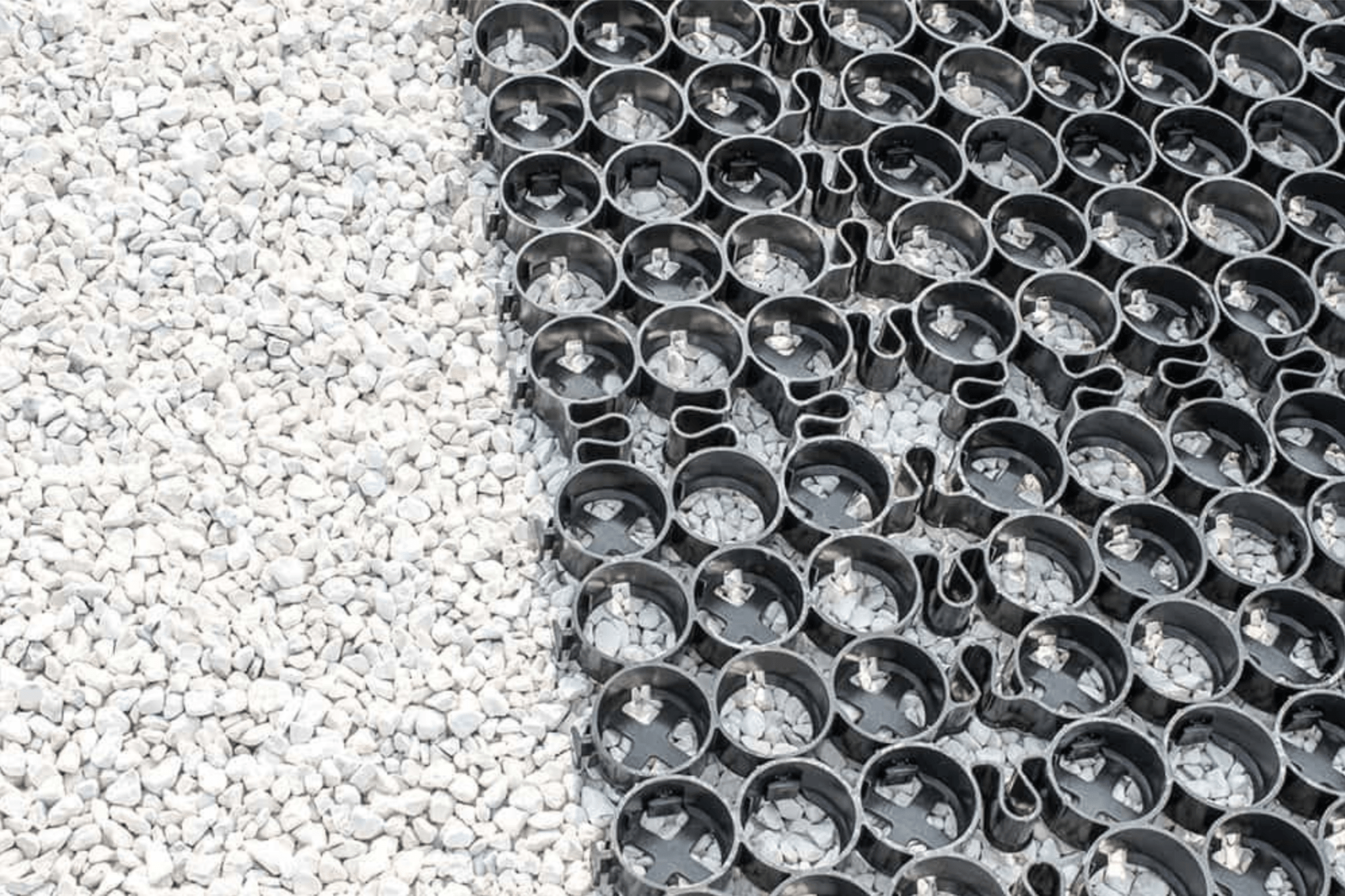
Permeable pavement might sound like more of a paving solution than a stormwater drainage solution, but it’s actually both. TRUEGRID PRO LITE and TRUEGRID PRO PLUS are both 100% permeable and capable of effectively draining water from even the most intense rainstorms.
You can use permeable pavement as a replacement for regular asphalt and concrete, making your entire parking lot or paved area into one big storm drain. The water filters through the gravel trapped in the pavers and drains back into the ground where it belongs. A parking lot made from these pavers also looks incredibly clean and professional.
TRUEGRID permeable pavers require almost no maintenance over a 60-year lifespan and are the quickest to install among all the drainage systems. They are also incredibly durable and can handle constant, heavy traffic without failing.
It’s Time to Embrace a Better Stormwater Drainage Solution
TRUEGRID has created one of the most effective, durable, affordable, eco-friendly, and aesthetically pleasing stormwater drainage solutions available, which is why many homeowners and business owners are switching over to TRUEGRID permeable pavement.
If you need a way to drain stormwater that won’t take weeks to install, won’t require costly maintenance, and won’t require you to sacrifice one inch of surface area for drainage equipment, call TRUEGRID today for a quote.

If you own or manage a warehouse and are in charge of maximizing the usage you get out of the space you’re provided, there are many options at your disposal. You could think about decreasing the aisle width if you aren’t worried about forklift navigation.
You could build a mezzanine above one or more of your floor-level processes, raise your racks vertically, use trailers for storage in short-term situations, make use of directed put-away, or use many other methods for making better use of the space in your warehouse.
Roofing, alternate construction materials, and exterior/hardscaping space savers are three more important factors when it comes to saving space. If you want to make much better use of your warehouse space, here are 3 efficient methods for doing so.
1. Creative Roofing Materials

Making use of vertical space is one of the most effective ways to get more out of your warehouse space. Many business owners don’t realize that the roof can often be an overlooked area. For instance, if you want a spot for employees to have leisure time or an opportunity to participate in a community garden, the roof is perfect for that.
You can create an entire green roof filled with greenery and vegetables. This is effective for communal purposes, and it also helps to insulate your roof which will cut your energy costs a bit as well. You can also save space by not having to use up valuable ground-level land for a leisure area.
If you’re really looking to save money on energy bills, you can also use the roof as a means to reduce expenses. For instance, you can install reflective materials on the roof that reflect the Sun’s rays away from your building, thus contributing to cooling efforts and lessening the burden on your cooling system.
Another way to lower energy costs via your roof is to install solar panels. Solar panels can take a huge chunk out of energy bills, if not eliminate them completely, depending on their size and how much Sun exposure they receive.
2. High-Quality Construction Materials

If you build the foundation and wall system of your building with higher-quality materials, you can save space and money in many different ways. For instance, ICF construction is a method of construction that uses insulated concrete forms to build the foundation and walls of a building.
The hollow concrete blocks are insulated by a special fluid and interlocked with one another. They are tied together with rebar or metal ties which creates a comprehensive wall system with no gaps or cracks anywhere in the foundation or walls. It improves energy efficiency by a great deal, and it also blocks out noise.
Instead of needing a big fence built around your building to deal with nearby noise pollution, you can implement ICF construction into your building and resolve two issues with one product, leaving that much more space to work with. ICF blocks are also fire-resistant, which could help you save space on other fire protection features you might have otherwise included in your design. Before breaking ground, it’s always best to invest in subsurface leak detection to determine if the foundation is safe from the potential of water damage.
Other high-quality construction materials to consider for your project are industrial concrete floor coatings, which enhance floor durability and reduce noise; fire-resistant drywall, which can improve fire safety; acoustic panels, which can minimize workplace noise; and reflective roofing, which lowers energy costs by reducing heat absorption. Together, these materials make for a more efficient, safe, and comfortable building environment.
3. Efficient Hardscaping

Parking lots, sidewalks, paved pathways, stormwater drainage features, and water retention ponds make up the bulk of land use for warehouses, outside of the actual building itself. The need for parking lots can’t be eliminated, however, the need for the extensive stormwater drainage systems that accompany them can be.
The solution: TRUEGRID PRO LITE and TRUEGRID PRO PLUS. Each of these paving materials is perfectly suited for handling the parking lot needs of any type of warehouse. When you replace an impermeable material like asphalt or concrete with permeable plastic pavers, you eliminate the need for additional drainage features.
TRUEGRID pavers are 98% permeable and can handle even the heaviest of rainfalls without flooding. The water simply drains through directly into a storage basin beneath the surface. Utilizing TRUEGRID permeable pavers eliminates the need for an above-ground retention pond as is so common with big warehouses, and it also removes the need for parking lot sloping, or drainage grate installation. The entire parking lot becomes a drainage grate.
Permeable pavers are a huge space saver for companies in any industry. By eliminating or reducing your detention pond through the use of permeable grid pavers, you can save land that can be used for parking or even outside storage. Gravel filled plastic grid permeable pavers are are great for storing trailers or puting palletized product that can be stored outside. Fork trucks work just fine with these pavers and the instant drainage ensures no water damage on your inventory.The paveers are durable enough to last up to 60 years with almost no maintenance required. They’re also stylish, easy to install, and unbelievably resistant to all types of damage.
Save Space in your Facility by Utilizing These Clever Tips
There are many different ways to save space, and while you might prefer opting for more traditional methods like shrinking aisle size, building a mezzanine, or using trailers for short-term storage, we think you’ll like our ideas too. By making use of your roof space and building your walls and foundation with ICFs, you’ll eliminate the need for outside leisure areas and additional noise barriers.
Of course, the most effective and efficient way to save space is by replacing your impermeable areas like parking lots with TRUEGRID permeable pavement. If you’re interested in saving a ton of land and putting it to better use, call TRUEGRID today to get in touch with a pavement specialist who can get you started.
Low impact development, or LID, is a method of developing the land that minimizes the disruption of natural water flow. It’s a method of stormwater management that allows developed land to work as naturally with Mother Nature as possible.
In case you’re in charge of developing a plot of land and you want it to be as eco-friendly as possible, let’s take a look at 6 LID strategies you can utilize:
The Basic Goal of LID Strategies
Environmental concerns, the heat island effect in urban areas, and water pollution have all prompted the increased use of LID when developing new land. The main goal of LID is to implement source control over stormwater, which means, instead of directing all stormwater and runoff into a sewer or single pipeline for a city to deal with, the stormwater is dispersed and directed back into the ground at the source. This keeps water tables replenished and prevents storm systems from becoming overloaded.
There are 3 levels to LID strategies. They are distribution, hardscape material and curb replacement, and recycling runoff and rainwater.
Distribution is typically achieved by using open areas of vegetation intended to allow stormwater to soak directly into the ground. This includes sustainable and native plants, tree box filters, bioswales, structural soil, bioretention cells, and soil amendments.
Level 2 LID strategies replace impermeable materials with permeable materials wherever feasible. This includes parking lots, alleyways, and sidewalks. This is accomplished by implementing permeable materials like porous concrete and, for maximum efficiency, gravel or grass-filled plastic grid permeable pavement. Roads are sloped towards these permeable areas and curbless parking lot islands are used to allow for the easiest flow of stormwater into these areas.
Level 3 LID strategies are used to recycle runoff and rainwater from roofs, sidewalks, and roads. It is then directed to subsurface facilities where it’s treated and reused for non-potable purposes. Some tools for implementing this strategy include disconnected roof drains, retention facilities below parking lots, cisterns, rain barrels, and rooftop channels.
6 Effective LID Strategies
1. Green Roofs
With a focus on commercial properties, green roofs are an effective way to filter and retain stormwater. They use entire roofs filled with greenery, like plants and shrubs that help absorb rainfall as well as slow the flow into storm systems. This method is considered a level 1 LID strategy.
2. Shrubs and Trees
They are not very effective on a residential or individual scale, but using trees and shrubs on commercial properties can act as a vertical rain garden. Trees help capture runoff and rainwater and can be a very effective strategy or even just a nice supplementive boost to LID efforts when planted correctly. This is another example of a level 1 LID strategy.
3. Harvesting Rainwater/ Reusing Stormwater
The collection and reusing of stormwater is a level 3 LID strategy and helps to lessen the burden on local water systems by providing water for non-potable uses that would otherwise come out of a city’s regular supply. Some of the ways to collect rainwater include using rain barrels and cisterns. Filter strips are also great for filtering rainwater before it’s diverted into collection.
Another method is to use curbless streets and/or ribbon curbs to divert rainwater into extensive underground collection basins. This allows commercial properties to use their underground space for the purpose of storing and collecting filtered rainwater and it’s a solution that allows for 100% land utilization, instead of using above-ground collection basins that take up space.
4. Open Space Development
For commercial properties with a lot of open land, open space development can be another great way to achieve low-impact design. To treat wastewater and stormwater, open business owners can install a series of cells filled with wetland vegetation.
These swales and constructed wetlands are an inexpensive way to achieve low-impact design and contribute to a better, healthier-looking aesthetic. Open space development is an example of a level 1 LID strategy.
5. Rain Gardens
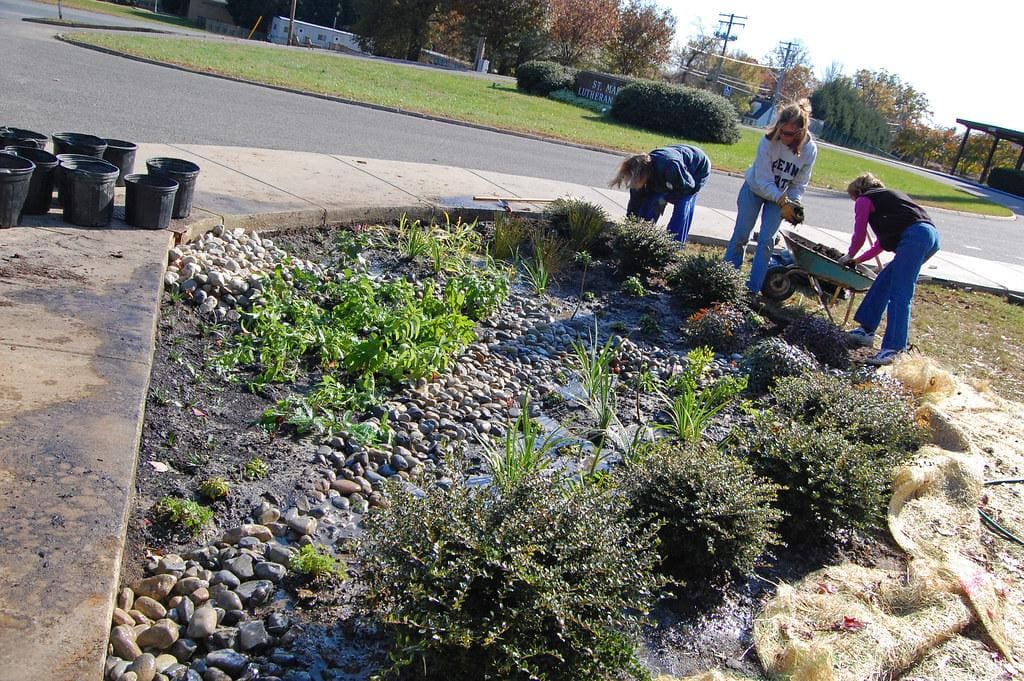
Another way for business owners and commercial property owners to implement LID strategies is to build rain gardens. Rain gardens are especially useful in urban areas where land is limited.
They need to be installed correctly in order to maximize the low-impact effect on rainwater, but rain gardens are a way to add beauty with native perennial plants while also contributing to a low-impact design. They are typically installed in low areas like next to a street or in shallow depressions where the stormwater can be easily diverted directly into them.
6. Permeable Pavement
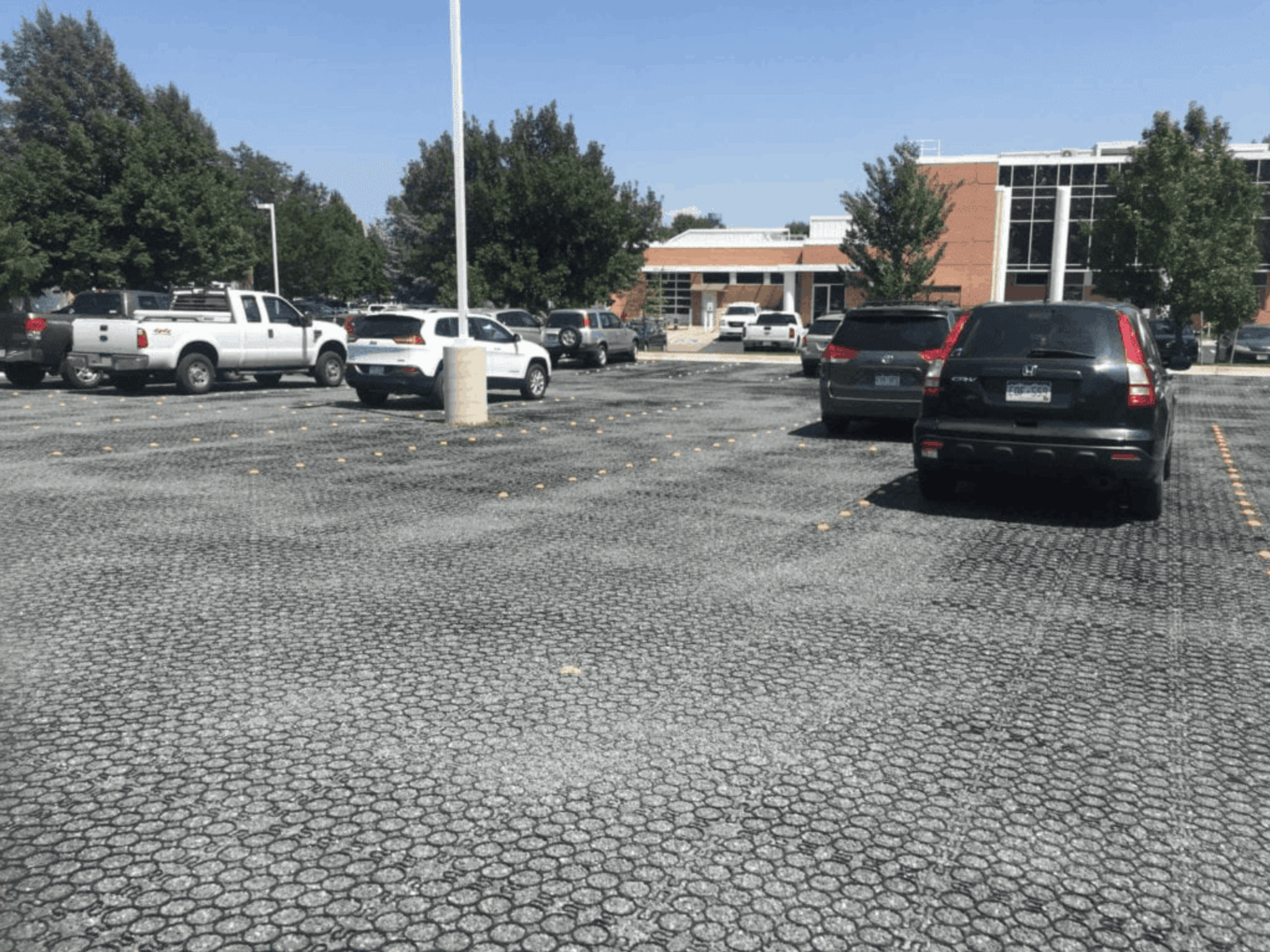
A level 2 LID strategy is installing permeable pavement in parking lots, sidewalks, and alleyways. Permeable pavement is the single most effective LID strategy, since it can replace large swaths of impermeable material with pavement that allows stormwater to drain and disperse directly into the ground or into an underground storage basin.
It also helps filter out pollutants by filtering the water through many pieces of gravel, preventing trash and other debris from entering local water systems.
TRUEGRID is the Best Choice for Level 2 LID Strategies
For efficient low-impact design strategies, TRUEGRID is the number one option for permeable pavement. They produce the highest-quality permeable pavement on the market, and their pavement is made from 100%-recycled plastic.
It’s durable enough to last up to 60 years. TRUEGRID PRO LITE and TRUEGRID PRO PLUS pavement provides full land usage to business owners and helps to eliminate the urban heat island effect found in so many cities.
If you want the most effective and efficient LID strategy available without having to sacrifice style or functionality, get in touch with a pavement professional at TRUEGRID today.

